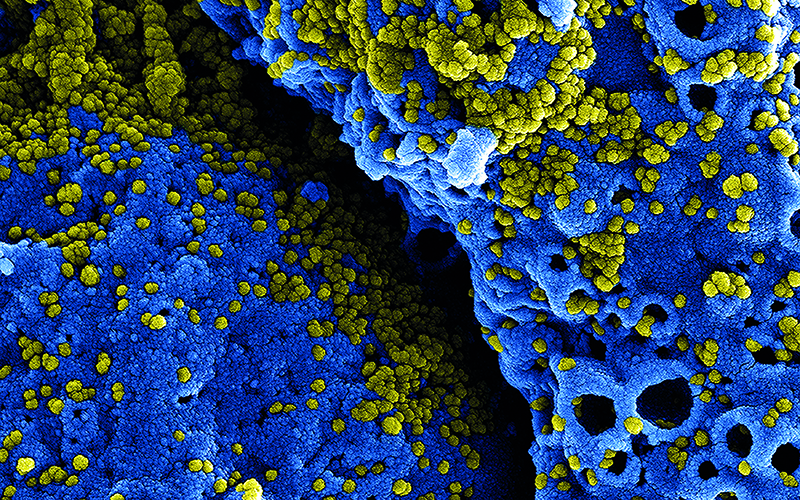Deputy Editor Nigel Brown provides a brief glimpse of the articles on offer in the fourth issue of 2020.

Issue 4 starts with a review of the year entitled “What have we learned” (Brown et al.), which provides a good starting point for readers of all disciplines to get an overview of the articles published in 2020. It is clear from the articles submitted to the journal that molecular genetic studies are becoming prevalent, which mirrors the steady introduction of molecular genetic methods into the routine laboratory.
COVID-19
Following the editorial there is a comprehensive review of the COVID-19 pandemic (Salvamani et al.). This is linked to previous similar outbreaks, namely the severe acute respiratory syndrome (SARS) and the Middle East respiratory syndrome (MERS). Given the delay between preparation of the article and publication of the journal issue, some very recent developments will not be present, but this review is recommended as it gives a clear foundation for understanding the molecular structure of the virus, the pathophysiology of the disease (which involves markers in all the main pathology disciplines), and finally reviews the vaccines under development. They further review studies of seroprevalence of antibodies, T cell activation, and existing auto-immunity, which will be extremely important if, as a society, we have to learn to live with this virus. It would be worth reading the article in September’s Biomedical Scientist, featuring Professor Sunetra Gupta, to consider some of the wider societal issues.
Infertility and pregnancy
A major portion of the issue is taken up with four articles concerning infertility and pregnancy. The first study (Jodeiryzaer et al.) examines polymorphisms in ESR1, which is the gene for one of the oestrogen receptors (ERα). This gene has more than 2200 single nucleotide polymorphisms (SNPs), some of which may be extremely significant in the development of female infertility. One SNP (rs104893956) when tested using in silico modelling has been suggested to produce a truncated or inactivated ERα. The second study (Tajelli et al.) examines the effect of a human telomerase gene SNP on implantation failure after in vitro fertilisation. The third study (Daghestani et al.) examines polymorphisms in the KISS1 gene (which has a role in the regulation of the hypothalamic-pituitary-gonadal axis) in relation to polycystic ovary syndrome (PCOS). They showed one SNP in a 3' untranslated region of the gene to be at a significantly higher frequency in persons with PCOS compared with controls. This area concludes with a study of the role of two microRNA (miRNA) molecules in the development of pre-eclampsia (Asadi-Tarani et al.).
Biomarkers
Long non-coding RNAs (lncRNAs) are RNA molecules that do not code for proteins, but act as regulators of many cell and organ functions. These molecules are showing some promise as biomarkers, with two (FAS-AS1 and PVT1) being implicated in systemic lupus erythematosus (Ali et al.), with increased levels of FAS-AS1 linked to nephritis and positive anti-dsDNA and low levels of PVT1 linked to oral ulcers, photosensitivity and neurological symptoms. However, these markers were not linked to disease activity.
Smoking is still a major cause of mortality and morbidity worldwide with more than 70% of deaths caused by lung cancer and chronic obstructive pulmonary disease (COPD). The alveolar surface integrity is maintained in part by a number of surfactant proteins and there may be genetic factors that influence the development of COPD. A link between
a polymorphism in the nicotinic acetylcholine receptors and the serum levels of one of the surfactant proteins was demonstrated (El Gayed et al.) and may provide a susceptibility to the development of COPD.
Finally, the expression of the transmembrane protein mucin-4 (MUC4) was shown to be increased in the bone marrow of patients with acute myeloid leukaemia (AML). This protein binds to the human epidermal growth factor receptor, inducing cell proliferation and survival. The study reported low levels of MUC4 to be associated with persistent remission and high levels associated with poorer outcome.
“Molecular genetic studies are becoming prevalent, which mirrors the steady introduction of molecular genetics into the laboratory”
Gene polymorphisms
It is becoming clear in studies of gene polymorphisms that very few disorders can be tied down to alterations in a single gene and it is noteworthy that the authors in the above studies are clear that findings in one population are examined in other populations worldwide. Of course, what may be judged to be a risk factor for one disorder may be protective for another. The article by Bahreni and colleagues in Issue 1 gives an idea of the complexity of the interaction between miRNA and various genes implicated in the development of breast cancer, emphasising the need to not focus on a single polymorphism.
Continuing professional development
Finally, over to you – please read the journal and use articles for continuing professional development, even if there are no set questions. More importantly, could a study be conducted in your laboratory that would be worthy of publishing? In addition to the obvious benefit to your laboratory of increased visibility within your organisation, for NHS labs there is the added incentive that R&D activity is assessed as part of the CQC inspections, as there is an association between research activity and good clinical care.




